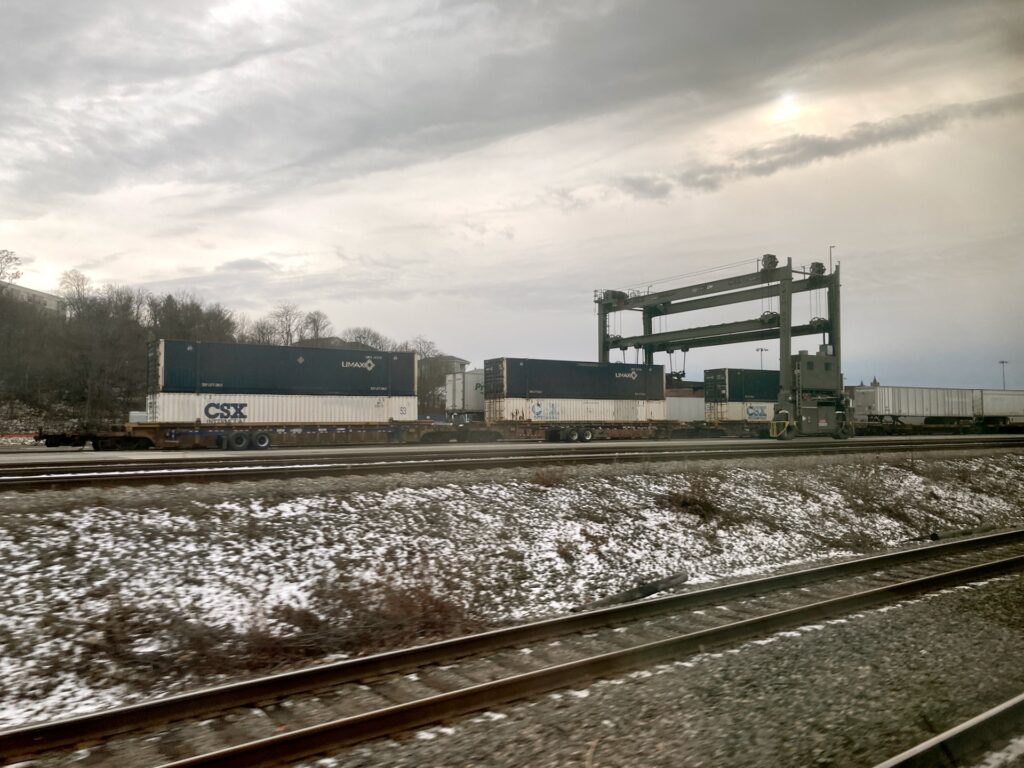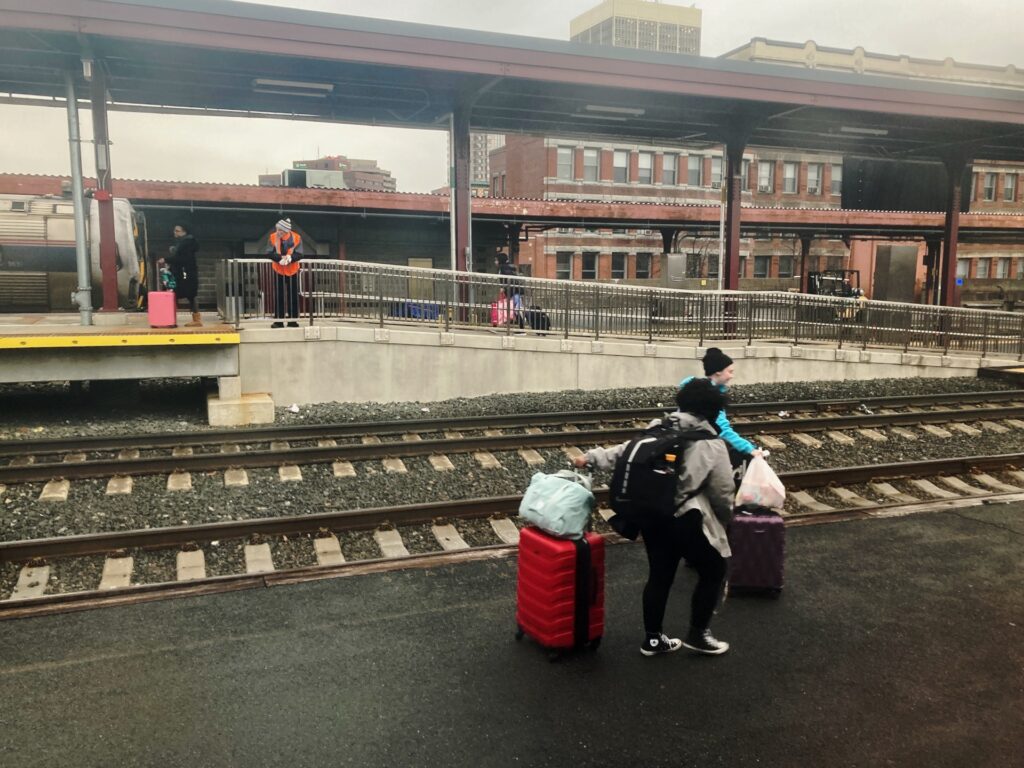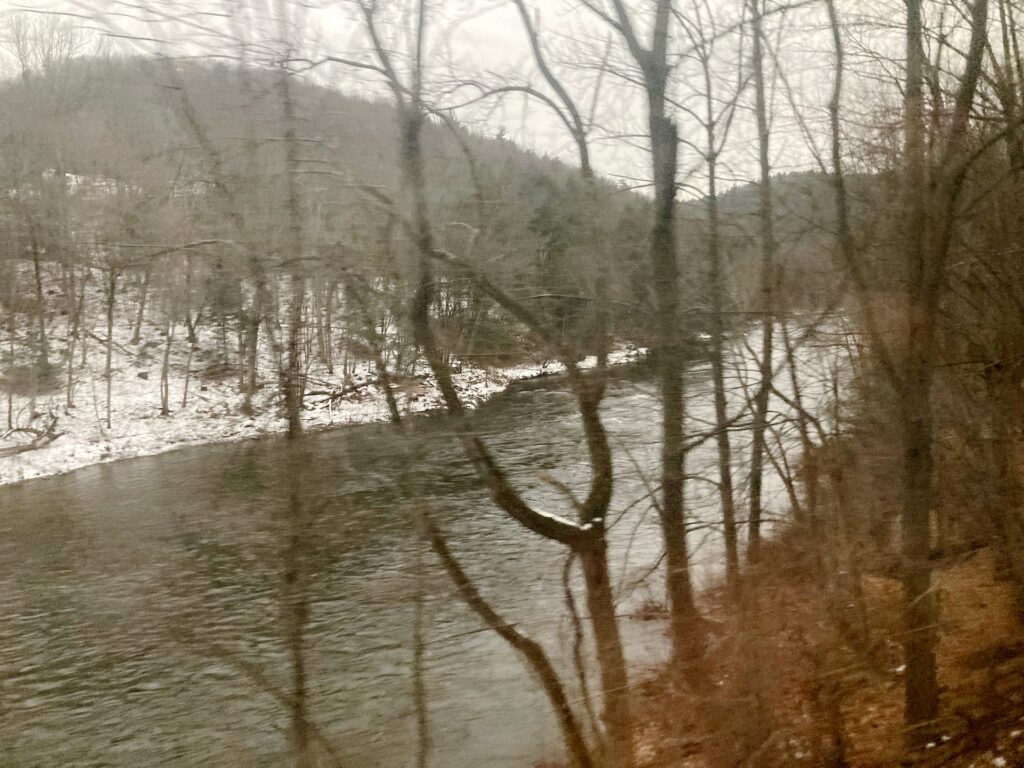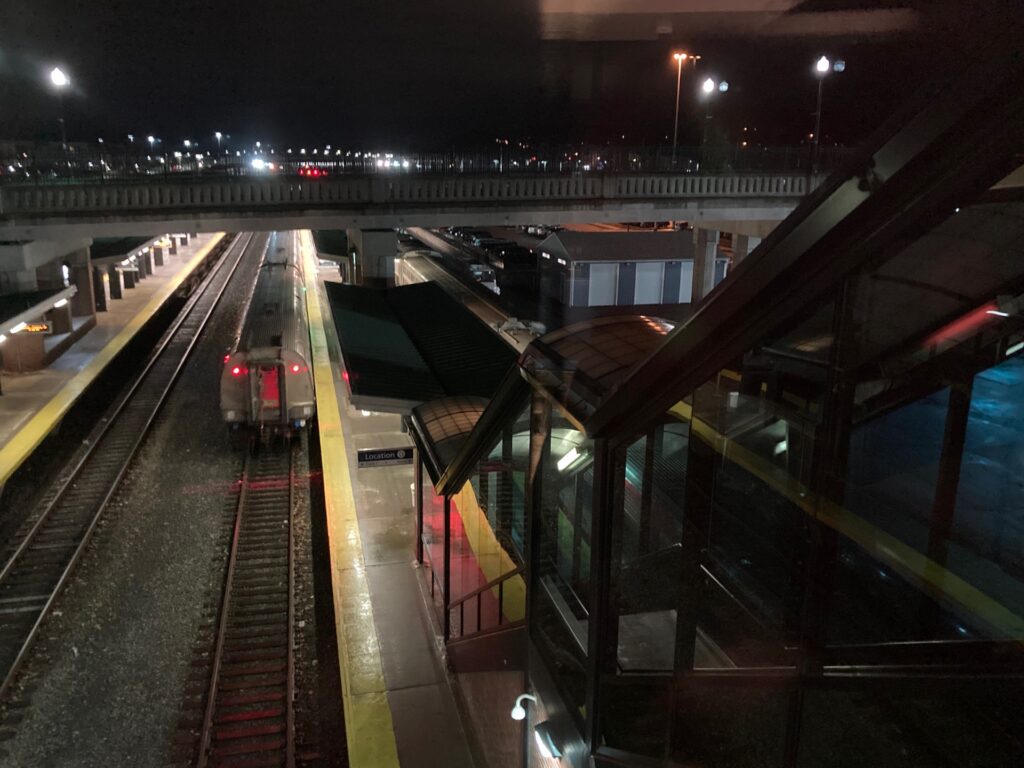I awakened in the middle of the night and looked out the window of the upper berth. Rain blurred the view. The GPS on my phone said we were in Buffalo, but I saw nothing distinctive.
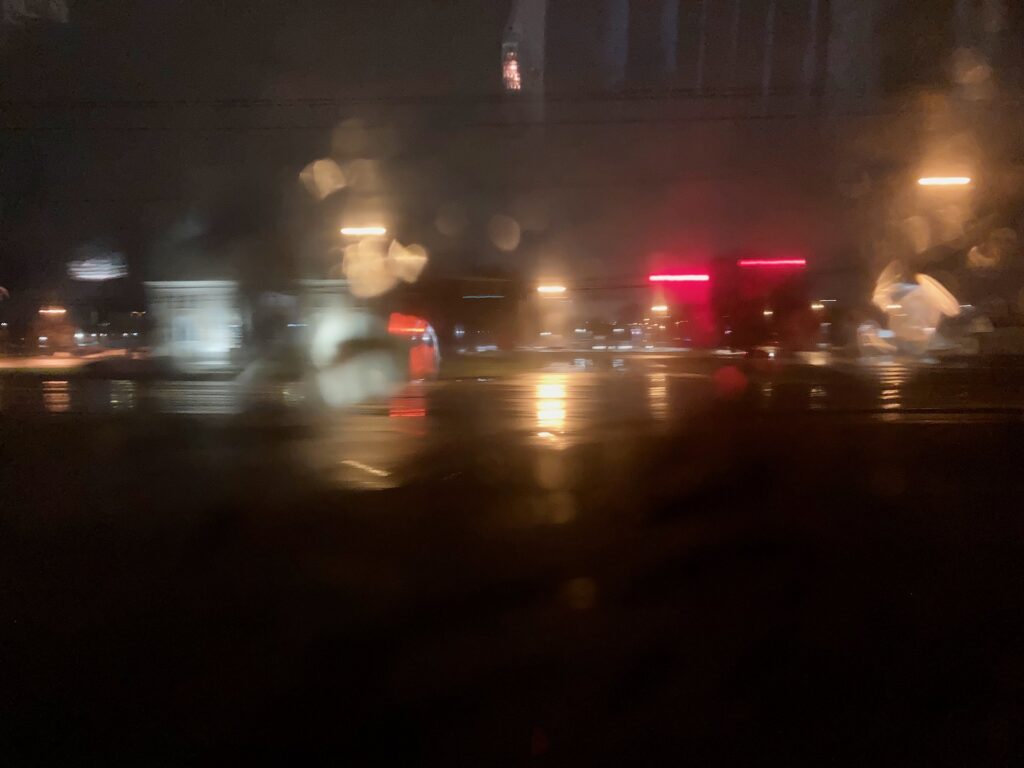
I had gone to bed before nine o’clock, so it was no surprise when I awakened at half past six. I tried to doze, but I was awake. I washed my face and shaved, got dressed, and tried to read for a while. At last it started to grow light outside. I opened the curtains of the roomette to watch the world go by. We passed a brightly-painted, brightly-lit water tower in Bryan, Ohio.

We mostly pass through farm fields, with a few patches of woodland, a few small towns, and a few areas of light industry.
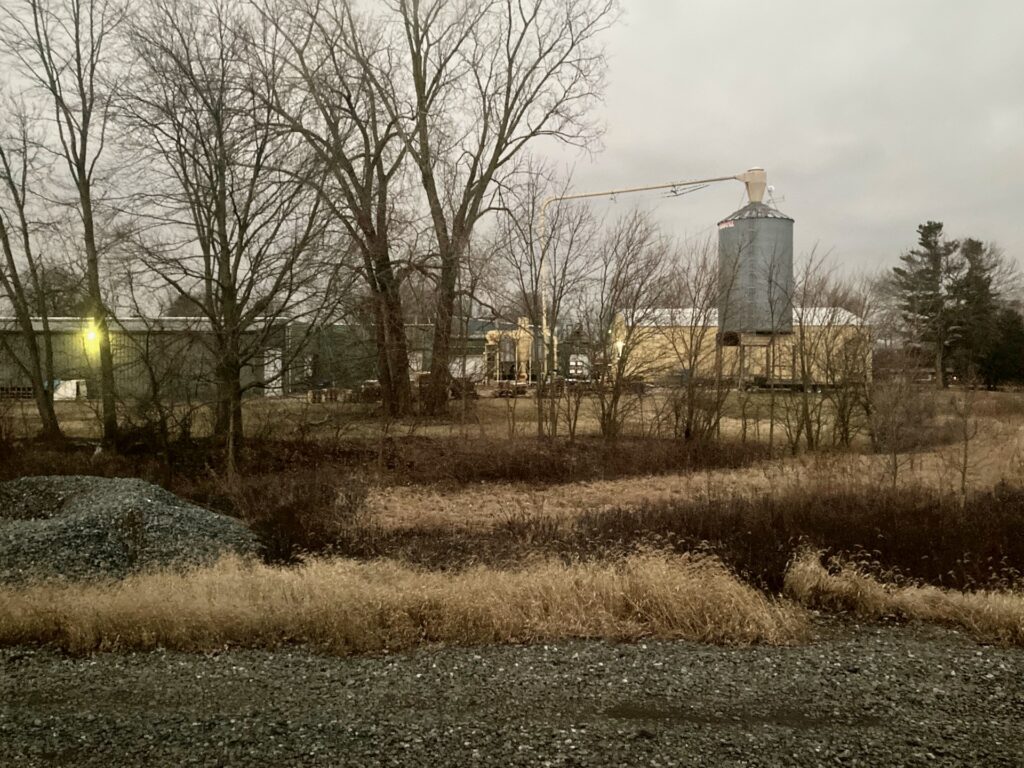
I saw no snow anywhere. I’ve taken the Lake Shore Limited several times before in January, and there is always snow on the ground at this time of year. But not this year. Global climate change is taking hold.
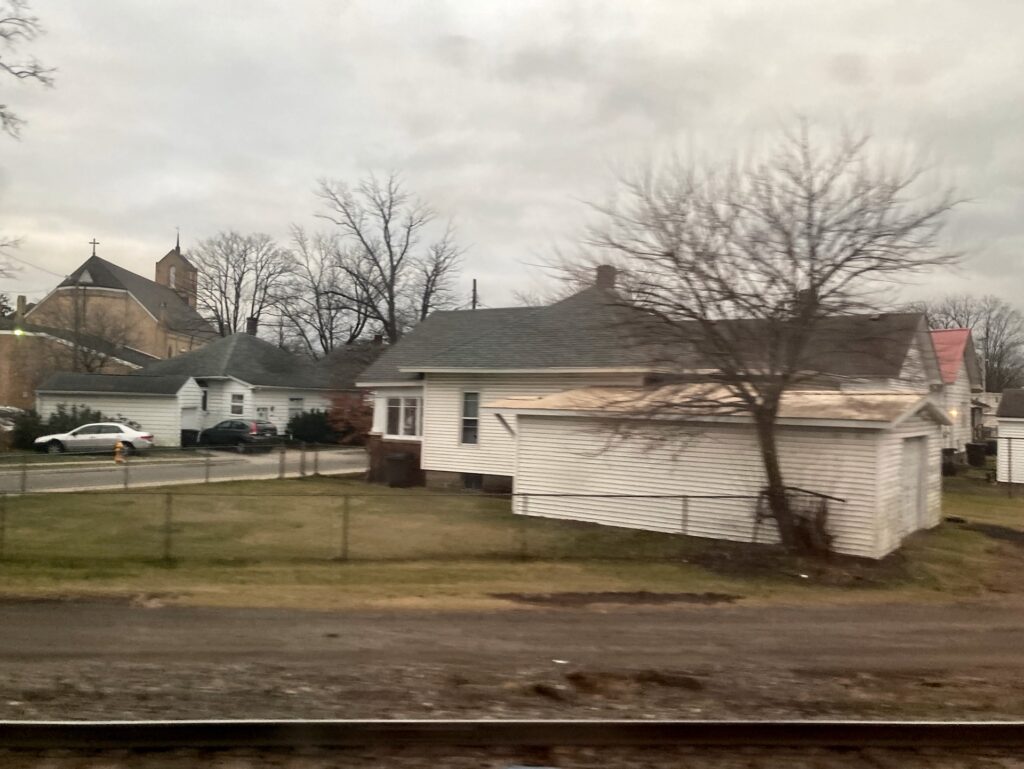
Before I knew it, we were in Chicago, arriving at Union Station just before ten o’clock, ahead of schedule. I went up to the Great Hall, to see if it was as spectacular as I remembered it being. It was, and is. The sight was spoiled somewhat by the fact that Amtrak plays bad Muzak which sounds echo-y and terrible in that high space. I did my best to ignore the bad Muzak, and just enjoyed the light and space. It was a very peaceful place to spend a couple of hours while waiting for the connecting train to Milwaukee.
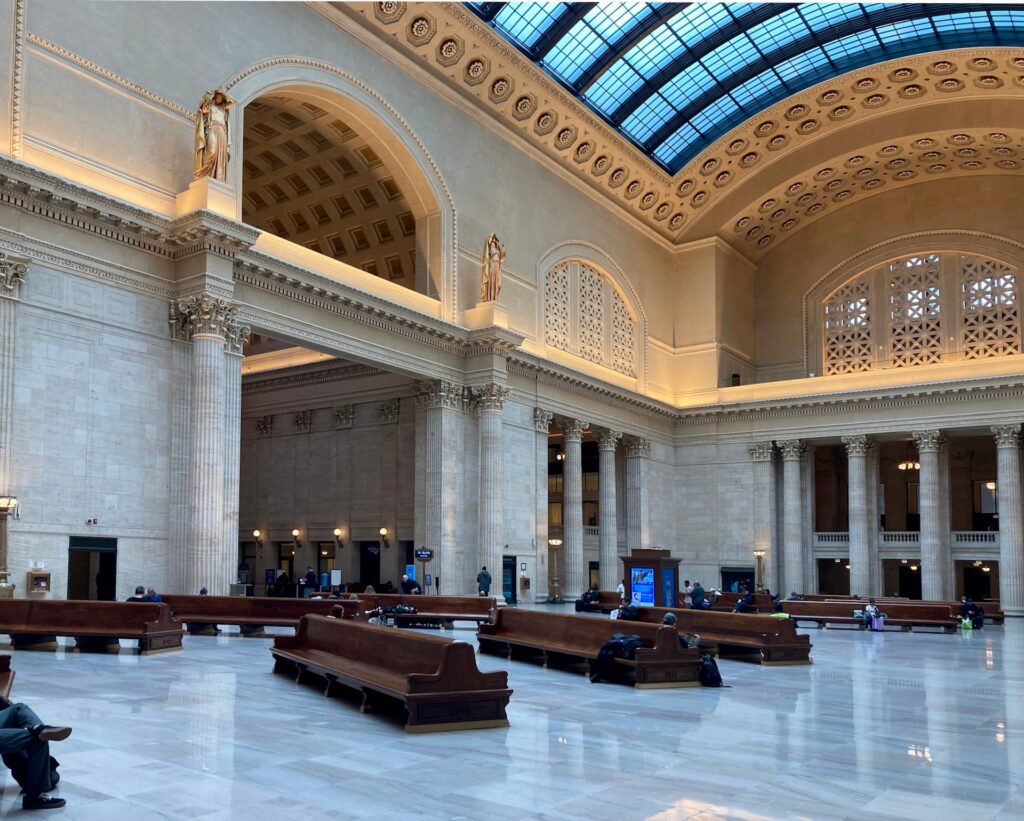
Hiawatha Service, the service to Milwaukee, was delayed half and hour due to a computer glitch. At last we were on our way. I enjoyed looking down the streets of Chicago and trying to imagine who lived there.
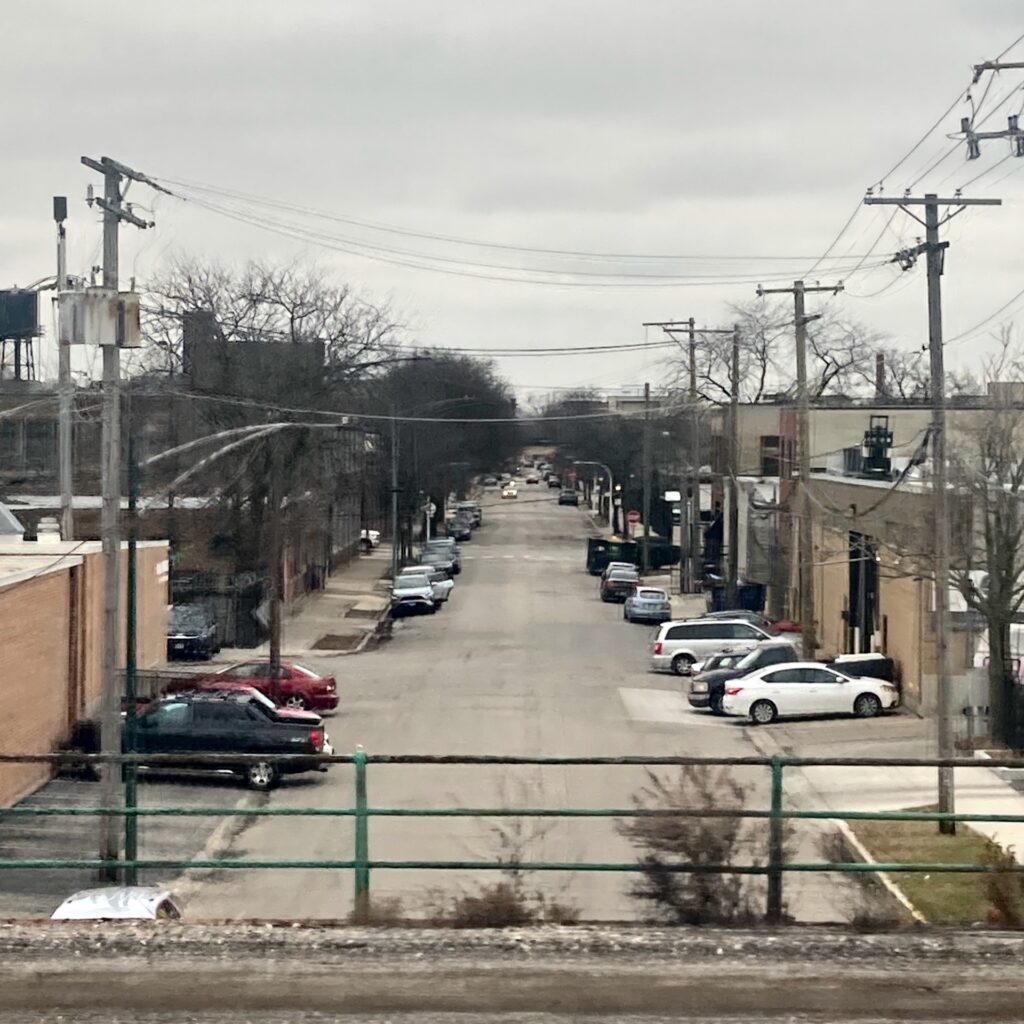
I dozed off, and awakened again when we were in Wisconsin. It was a short ride, just under 90 minutes. The downtown Milwaukee train station was nothing special — it looked like a bus terminal, and actually it was a bus terminal as well as a train station.
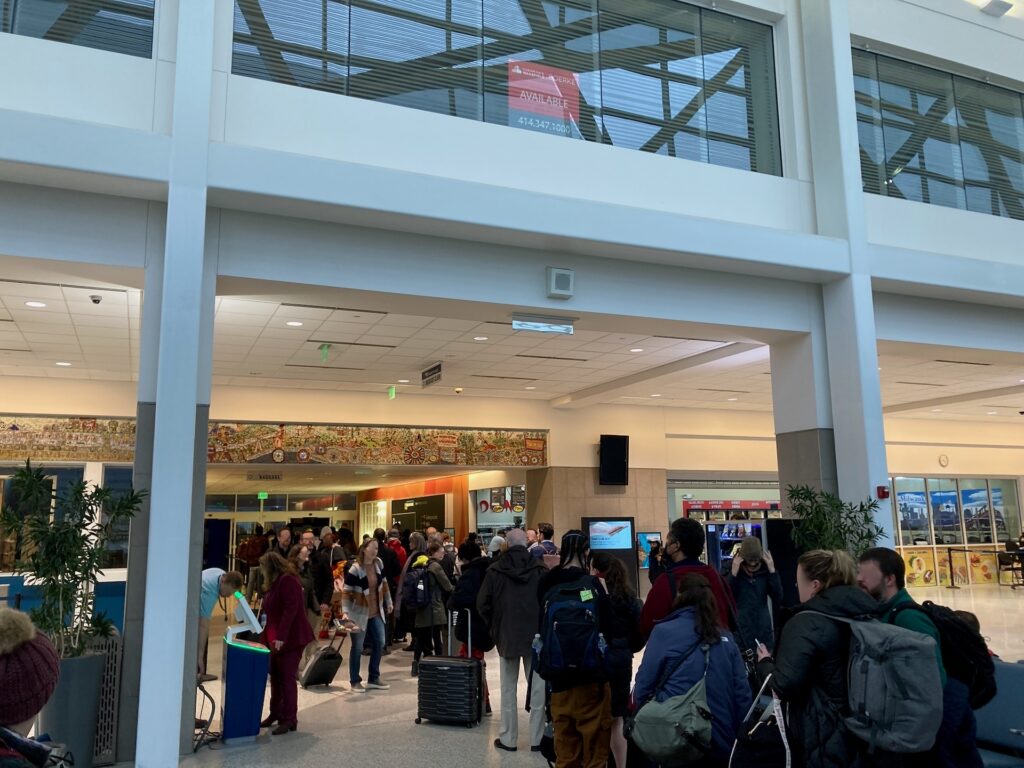
Carol and her dad were waiting to pick me up outside the station. Supposedly there’s a move to extend train service all the way up the coast of Lake Michigan to Green Bay. That would have saved Carol an hour and a half drive down to pick me up.
While my trip took much longer than the two hour flight from Boston to Milwaukee, my carbon footprint was much, much smaller. And I enjoyed it more, because instead of being treated like animated cargo (that’s how TSA and the airlines treat you), I was treated like an actual human being.

